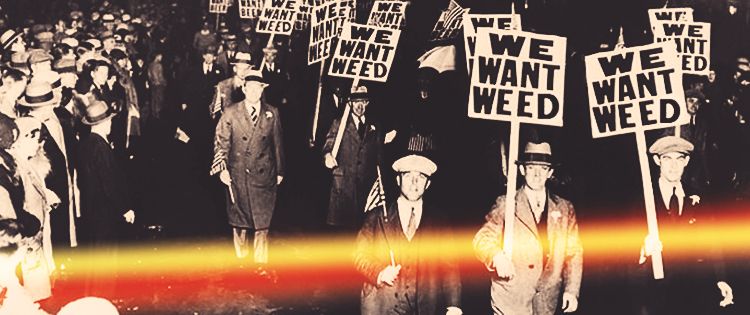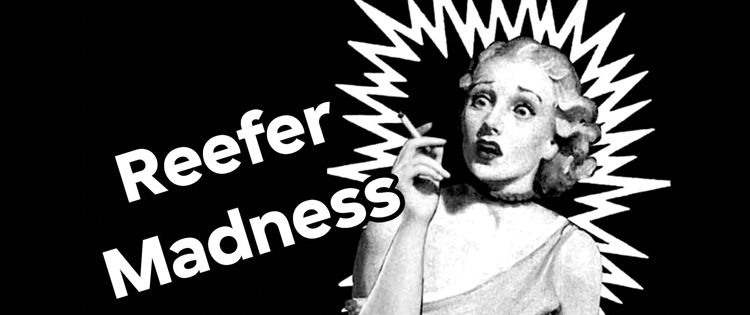The battle for marijuana legalization started as soon as it was banned back in the 1930s. Before the ban, the plant was used by many civilizations for different purposes, most commonly for healing and aromatherapy. Its history goes way back to BC… and now, after many years, the plant is making history again as the marijuana legalization movement reaches new heights.
Those fighting for the legalization of marijuana have been doing so since the beginning. Their arguments and resources to debunk the stigma against marijuana had gained clarity and proof in recent years. The key argument revolves around making marijuana accessible for medical use and this has gained a lot of traction.
It is in the medical science and discoveries where the real benefit of cannabis lies and the power to change its illegal status.
With the legalization battle escalating, making headlines globally we are seeing medical marijuana being legalized, state by state, country by country around the world.
But why has it taken so long for legislation to finally be on the table?
What has happened to change the way the world sees this plant?
In this article, we will take a look at the significant events that lead to today’s Marijuana Legalization Movement. But before we can do so, we need to look at how it all began…
How it all began

Cannabis played a huge role in cultures all around the world. Different cultures used cannabis for basic needs like food, shelter, and clothing, and some saw it as a medicinal plant. The medical properties of cannabis were unmatched until pharmaceutical companies came into the picture.
At this point, it was still a much-loved plant.
When the United States federal government began to condemn the cannabis’ psychoactive properties and dubbed it as a ‘dangerous drug’ in the U.S., other countries followed the process.
It is here where the global battle against cannabis began and advocates started the fight to legalize it again.
Other countries who joined the war against cannabis were not necessarily well informed about the plant and accepted the new stance against it as fact without conducting their own research.
Even though cannabis proved to be promising in an industrial and medicinal standpoint, developed countries could not help but be part of the war which lead to the illegalization of cannabis.
Many countries like Australia, UK, Germany, and France to name a few, took part in the drug war and signed the 1925 Geneva Convention on Opium and Other Drugs.
1920s- The Feds Blurred the Lines

In the 1920s, The United States government went about telling the public that components in the marijuana plant proved toxic and that its use could be harmful to individuals in society.
The information the government gave out, was not taken lightly by the marijuana communities.
Though marijuana was not yet made illegal, it is here where the people found a joint cause and the birth of the Marijuana Legalization Movement began.
Groups and organizations spawned all across the United States, who went about promoting cannabis as something beneficial to the world, promoting peace and equality amidst war and chaos.
Although these groups had no concrete legitimate data to prove that cannabis was indeed a form of cure, but advocacy was mostly centered on spirituality and morality.
1930’s- Marijuana is Taxed and Scheduled as a Dangerous Drug

The government would give out tax stamps to farmers who wanted to plant cannabis either for distribution or personal consumption. This meant that people who wanted to plant cannabis or hemp should get legal documents from the government before they could do so. Tax stamps was a form of control the government put out to control cannabis production.
In the mid-1930s, the war on drugs specifically aimed towards cannabis had officially started.
Because of the lack of technology during those times, cannabis advocates who knew the truth about the plant could not communicate the information to the hierarchies in government. And since the research regarding cannabis was funded and handled by the government, all the public could do was watch as the new law were implemented.
Research done by the government stated that cannabis is a “gateway drug”, it could “decrease brain cell count” and even lead to “lung cancer”.
1940’s- Black Propaganda on Cannabis Continues

In the 1940’s, the U.S. Government put out a series of films that was directed to prohibit cannabis consumption in society.
“Reefer madness”, portrayed the stigma for cannabis use in America. Scenes in the movie portrayed cannabis as something that makes you lose control of yourself or a substance that can make you go crazy. This then led to instilling a fear for cannabis consumption in society.
The government then came up with the term “Marijuana”, which is the most common term to describe cannabis today. There is no exact explanation as to why the government decided to call cannabis “Marijuana”, but advocates say that the word was to bring forth a negative tone to support the government’s prohibition movement, making it sound more Mexican.
1950s- Cannabis is Illegal in America

In the 1950’s, cannabis was already an illegal substance in America’s public eyes. The Boggs Act was implemented and was to act upon the minimum sentencing for cannabis possession, cannabis use and its distribution. These efforts by the government sort of aimed towards decreasing prison violence, which was rampant at that time, by flooding prisons with nonviolent offenders.
The government had succeeded in their plans for prohibiting cannabis use at this era, because of the fact that incarceration was the biggest fear the public could have faced regarding cannabis use.
Late 90s- The Great War on Drugs

There have been countless efforts from cannabis advocates to try and push the truth about cannabis out to the public. Recently we discussed some of the major advocates in ‘The Great Organizations Fighting For Marijuana‘ article and it revealed some great achievements and progress that have made in the battle to legalize cannabis.
NORML (The National Organisation for the Reform of Marijuana Laws) is one of these organizations and have been fighting the war on drugs/marijuana since the 1970’s. NORML is one of the main groups that until now is still fighting for cannabis legalization and decriminalization.
Since the 1990’s, NORML can be seen with headquarters all around the world, including London, UK and Barcelona, Spain. The organization has been actively updating the public with providing the latest research in cannabis science and its medical applications.
Despite these efforts by different organizations that promote the legalization of cannabis, the widespread of the American influence on the war on drugs took over the world. This led to strict cannabis laws that were implemented in countries like Singapore, the Philippines, Poland, Hungary, Indonesia, and Malaysia.
2000’s New Knowledge, New Era

In the new millennium, things have started changing. The war has weakened and the revolution to legalize cannabis gained momentum.
The most recent global event took place on May of 2016. Cannabis advocates gathered in 829 cities in 72 countries to do the Global Marijuana March. Documentation regarding the rally can be seen on various websites across the internet. The overall headcount of people who participated in the rally could easily come close to a million.
Many other similar events have been taking place over the last few years and it is thanks to the internet. Due to the internet, and social media these events are made possible with the speed of communication in this New Era.
We see various social media groups and new media platforms advocating for marijuana legalization and among them is Greendorphin.com.
These new media platforms publish evidence and research-based content to not just educate the public and help spread awareness about the true benefits of cannabis, but also further the thrust toward global marijuana legalization.
The awareness of the benefits of cannabis has reached new heights in 2016.
The recent victories of the marijuana legalization movement led to the implementation of medical and recreational marijuana use, in states such as Colorado, Washington, California, Alaska and Oregon.
The movement of legalizing marijuana is grounded on promoting cannabis for health, and for compassion, to uphold the human rights and to propel the science in cannabis.
Moving Forward
To date, the battle against the prohibition of marijuana is still ongoing. Despite countless research and data to prove that marijuana is a harmless substance, the government is still delaying and almost unwilling to compromise with the facts that have been presented by researchers.
But times are changing and as reluctant as some are, others are taking action and the ball is rolling.
We have gone so far from having to relay information over in morse code, telegrams and fax machines. We can honestly say that because of the internet and today’s information age, the truth is no longer hidden.
With technology enabling us to share the discoveries, the demand for Medical Cannabis is undeniable and will have to be considered by all governments where it is still banned.
How can you help further the ideals of the Marijuana Legalization Movement ?
We would like to hear from you!
- How to Use Waxmaid Honey Pen? - April 9, 2024
- How To Choose The Best Electric Dab Rig For Christmas - December 7, 2023
- Maintenance Matters: Keeping Your Glass Water Bong in Pristine Condition - October 9, 2023


